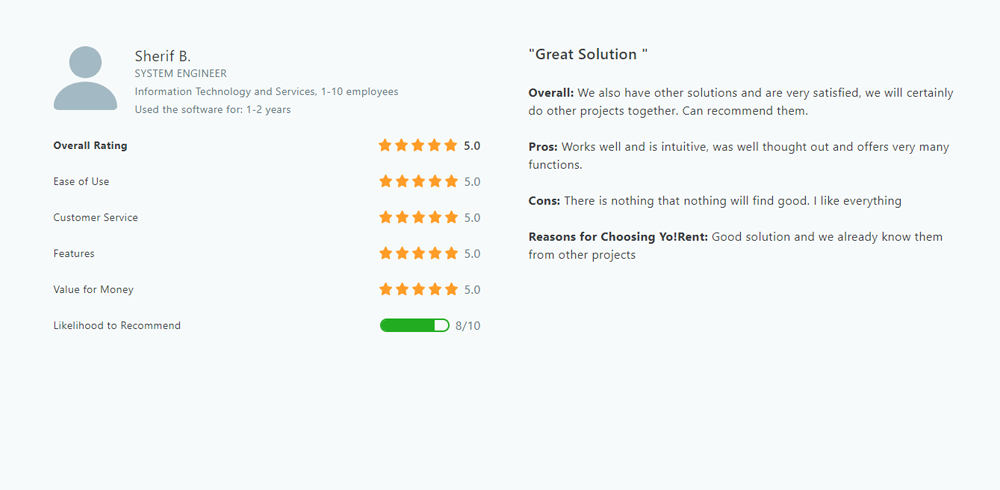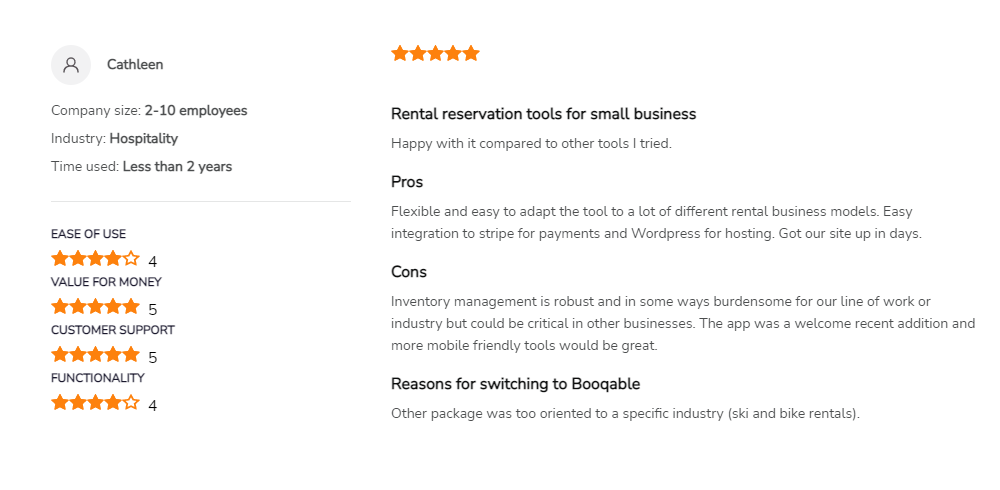The Rental Software Showdown
Before we dive deep into the comparison along core functionality and design elements, let’s first take a cursory look at the key highlights of the two software and how they differ from each other.
White-label rental software available at a one time cost for lifetime license. It is the best solution to launch an online rental store or marketplace
- In-built with both rental and sales functionalities
- Supports both single vendor and multi-vendor operations
- No features restrictions for any business owner
- Smooth and user-friendly interface
- Comprehensive discount management features
- Fully customizable to meet any additional business requirements
- Suitable for all size of businesses
- Unlimited staff accounts
Cloud-based software with monthly payments. Booqable is a non-white label solution that supports single vendor business models only
- Comes with rental functionalities only
- Supports single vendor operations only
- Feature restrictions in Essential and Pro package
- User reported glitches and errors in interface
- Limited discount options, with no option to limit coupon usage
- No customizations available
- Suitable for small startups in the initial market testing stage
- Limited number of staff accounts, with extra charges for each additional account
Milestones Achieved - Product Innovation & Development
Looking at the timeline of the two software parallelly, we find both launched about the same time (2014-2015) but go their own ways in the choice of business models(Booqable - Single Rental Store Model, Yo!Rent - Multi-Vendor Marketplace Model). That makes the comparison slightly tricky but the key highlight is the launch of Yo!Rent Single Vendor in 2020. In other words, a strategic shift in the company’s mission to capture more share of the rental economy that’s already so successful in the multi-vendor arena. While both software have invested reasonably in product development and innovation, Yo!Rent appears to take the edge with its much wider coverage across the rental economy and expansion into new business models.
Support For Multi-Vendor Marketplace Operations
The online multi-vendor or marketplace business model offers many perks to the website owner. Right away, vendors can be charged a membership/registration fee for joining the platform. Then there’s the commission fee that can be levied on both vendors and end users for any successfully completed transaction. Finally, featured/premium listings and 3rd party adverts can act as additional streams of revenue for the platform owner. To facilitate all these key operations and much more in the form of inventory management, agreement management, security deposit, tiered pricing, Yo!Rent offers a dedicated multi-vendor marketplace system. Apparently, we have nothing to compare it against in Booqable, which is built exclusively for online rental storefronts for a single-vendor.
Head to Head Feature Comparison - Yo!Rent Vs Booqable
We sure would like to add some more commentary on our take on the two software, but for the sake of brevity, we’ve broken down the comparison along key feature offerings, modules, payment handling, security, installation, hosting and several other technical aspects in the table below. This will help you get a more balanced view of how the two software stack up against each other.
| Admin Features |
|
 |
|---|---|---|
| RFQ (Request for Quotation) Module | ||
| Price Surge Module | ||
| Late Return Module | ||
| Add-on Services Module | ||
| Cancellation Module | ||
| Import/Export Module | (Only Manual Import Available) | |
| Blog & Social Media Integration | ||
| PPC Ads | (Google Ads Integrated through Zapier) | |
| FAQ Module | ||
| Personalized Homepage | ||
| Reporting & Analytics | (Available Only with 'Pro' & 'Premium' Plans) | |
| Top Rented Products Report | ||
| Top Searched Products Report | ||
| Buyer/Seller Sign-ups Report | ||
| Advertisers Report | ||
| Custom API Integration | (Available Only with 'Pro' & 'Premium' Plans) |
| Vendor Features |
|
 |
|---|---|---|
| Selling Functionalities | ||
| Agreement Management & eSign | ||
| Product Inspection | ||
| Tiered Pricing | ||
| Product Catalog Management | ||
| Inventory Management | ||
| Product Reviews Management | ||
| Shipping & Delivery Module | ||
| Abandoned Cart Management | ||
| Invoicing Module | ||
| Promotional Banners | ||
| Individual Vendor Storefronts | ||
| Latest Orders Report | ||
| Products Inventory Report | ||
| Rental Security Management |
| Buyer Features |
|
 |
|---|---|---|
| Map View For Shops | ||
| Advanced Search Functionality | ||
| Custom Filters | ||
| Product Comparison | ||
| Multicart Checkout | ||
| Location Based Product Sorting | ||
| Featured Products Section | ||
| Map View |
| Add-ons |
|
 |
|---|---|---|
| Discount Coupons | (Available Only with 'Pro' & 'Premium' Plans) | |
| eWallet Management | ||
| Tax Management | ||
| Currency Converter |
| Security Features |
|
 |
|---|---|---|
| Document Verification | ||
| GDPR Compliant | ||
| Phone Number Sign-in | ||
| Multi Layered Security | ||
| SSO (Single Sign-on) | (Available Only with 'Premium' Plan) |
User Experience - Does it Work as Good as it Looks?
With user experience, we’re really getting into the thick of core functionality offered by the two software. Our focus of comparison would be the two software’s user interface, navigation, ease of use and user friendliness. On the surface, both Yo!Rent and Booqable offer distinctive and seemingly organized designs. But spend some time on each software and you’ll begin to view the two designs in a totally different light.
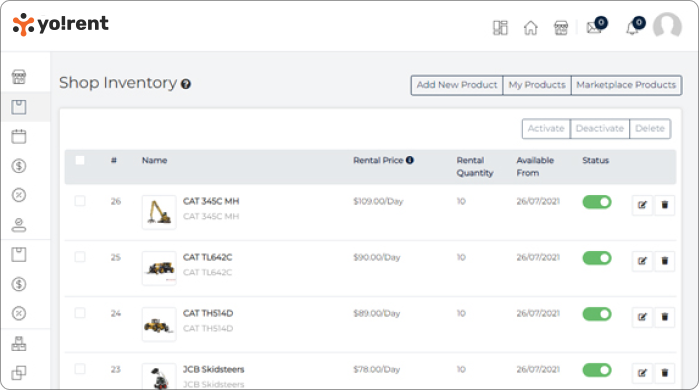
In Booqable, the user interface for customers simply feels clunky and rigid. Order handling is complex to the point where your operators might need to manually edit/rework each online order. In contrast, Yo!Rent offers a neat, user intuitive interface, which in unison with its unique niche-oriented features make light work of complex rental operations.
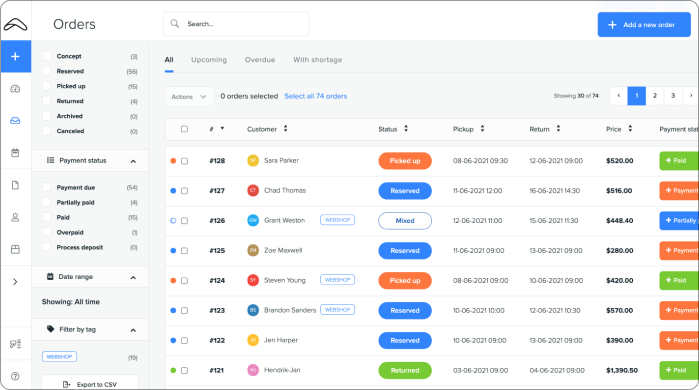
Niches & Market Segments Catered
In the niche department, Booqable commands a noticeable presence in some popular B2C markets but it pales in comparison to Yo!Rent’s extensive coverage which spreads far beyond that to the large B2B markets like Heavy Construction, Farm & Agro, Oilfield & Aerospace equipment rental.


Customizability - Beyond Key Features & Design
Although Yo!Rent is designed as a ready to deploy software for core rental operations, its base architecture can be built upon, both in terms of design and functionality, to reach SMBs and enterprise level customizations. Even the four industry-specific variants for Fashion, Automobile, Heavy Equipment and multicategory rental can be customized to cater diverse business needs and use-cases. Now, except for design, nothing of this sort can be expected in Booqable, which has a ‘one size fits all’ architecture.
Documentation & User-Guides
Software documentation is sort of like a fine detail that answers how meticulously you’ve worked on your product offering. In Yo!Rent, we clearly see vast amounts of time and effort invested in building a knowledge base that includes feature lists, user manuals, set-up guides to activate 3rd party APIs, and video tutorials. Booqable does have a dedicated documentation section but we couldn’t find anything in the way of custom API integration manuals.
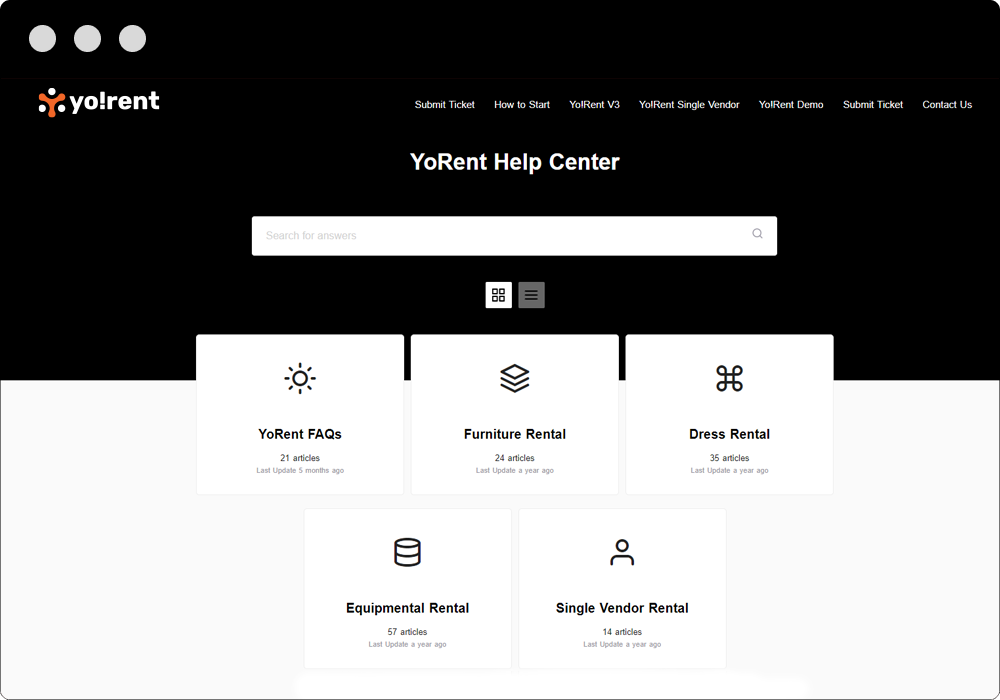
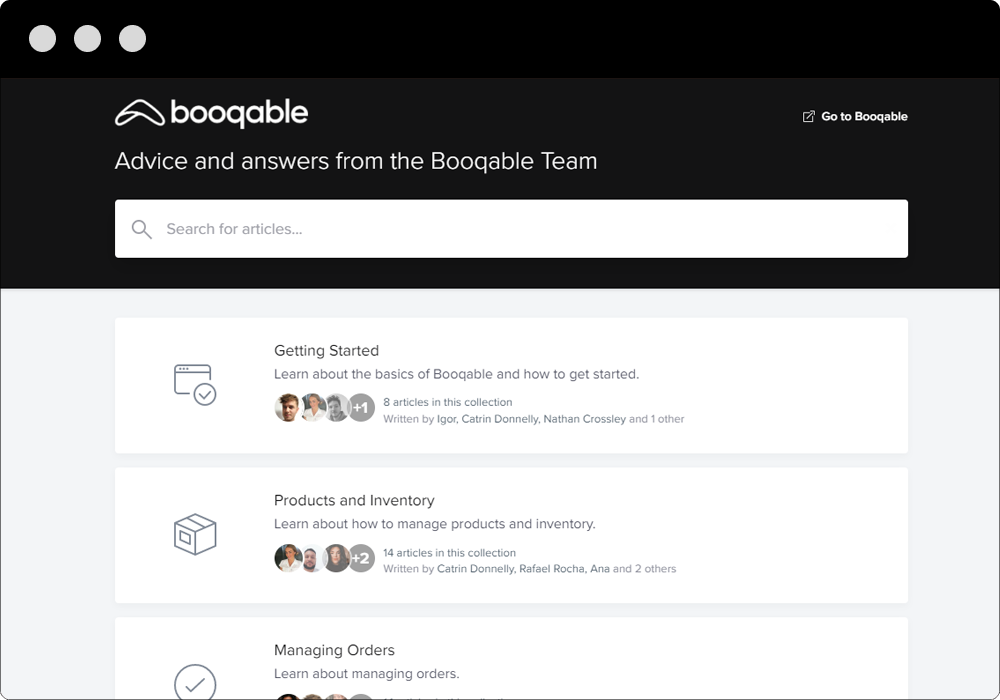
Key Quantifiables - APIs, Payment Gateways & Additional Support
Moving away from the technical aspects of the two software, we will try to weigh Yo!Rent and Booqable’s key offerings and additional benefits to ascertain which of the two offers better value. Starting with the APIs, we see nothing coming pre-integrated in Booqable whereas Yo!Rent offers MailChimp, Google Maps and Google Analytics out of the box. Moving on, Yo!Rent offers 23+ payment gateways compared to Booqable’s only 2. Finally, Yo!Rent comes with 1 year of free technical support and expert digital marketing services. No such add-ons are available with Booqable.

The ‘Price Point’
We saw that both Booqable and Yo!Rent are based on different license models:
Booqable offers 3 different packages, costing $35, $95, and $299 per month. If you want to avail Booqable’s 20% discount, you will need to opt for the annual billing cycle, which costs $348, $948 and $2998 per year. This means that for the Premium subscription of Booqable (Yo!Rent’s equivalent), you are paying nearly a whopping $15,000-$18,000 in 5 years.
Yo!Rent, on the other hand, is a one-time license software. When pitched against Booqable, Yo!Rent’s lifetime usage costs levels with Booqable’s 6-12 months of subscription and is a fraction of Booqable’s long-term costs. The more you use Yo!Rent, the more cost-effective it becomes in comparison to Booqable.
While the low upfront cost of Booqable might seem like a good deal at first, we shouldn’t forget that subscriptions keep you tied down to the software and that cost of license is always going up with each new payment. So, if you’re someone with a long-term vision for your platform, Yo!Rent makes perfect business sense given its plethora of features, host of 3rd party integrations, and a highly scalable architecture.
Our Verdict
Throughout our comparison, Yo!Rent proved to be a far superior competitor to Booqable. While Yo!Rent was launched around the same time as Booqable, the former’s parent company FATbit Technologies has been on the ecommerce stage for roughly 20+ years. That experience comes to the fore in its software architecture, which is built to offer maximum customizability and scalability to client businesses. To conclude, Yo!Rent towers above Booqable with its wider niche coverage and support for B2B, B2C P2P rental outfits.
Ready to launch a splendid online rental platform with Yo!Rent?
Lets TalkFrequently Asked Questions
Does Yo!Rent have any monthly subscription pricing plan?
Yes, while YoRent is a lifetime license-based software that comes at a one-time cost, we understand that a monthly payment option can be helpful for various rental businesses, that is why we have introduced a recurring payment plan that breaks down the total cost of the software into multiple monthly installments.
The recurring pricing plan of YoRent differs from SaaS subscription plans as in SaaS, the recurring charges are paid indefinitely. Yo!Rent's installments end once you have paid the entire cost of the solution and get full access and ownership to the software for a lifetime.
Our monthly pricing plan is to help you get started with Yo!Rent easily and reduce the overall time-to-market.
Contact our sales team for details on our monthly pricing plan and how it can benefit your business.
Do you also have documentation on how we might ease the transition from Booqable to Yo Rent to minimize downtime?
We provide proper documentation to our clients and also offer training to minimize your overall downtime. Furthermore, your new rental marketplace can be deployed within just 3-4 working days of license purchase.




